27 Of The Most Interesting Moments From "The Mystery Of Marilyn Monroe: The Unheard Tapes"
On April 27, Netflix dropped one of their latest documentary films, The Mystery of Marilyn Monroe: The Unheard Tapes, which explores the legendary actor's life and mysterious death.

After beginning a successful modeling career, Marilyn decided to follow her passion for acting. She got her start with parts in movies likeThe Asphalt Jungle and All About Eve, and went on to star in Gentlemen Prefer Blondes, Niagara, and Some Like It Hot.
Her illustrious career was sadly cut short when she died in August 1962 at the age of 36. While her cause of death was reported to be a prescription drug overdose at the time, numerous conspiracy theories related to her death have remained in the years since.
Previously unreleased audio interviews with friends and colleagues of Marilyn's, like actor Jane Russell and photographer Milton Greene, are featured in the documentary.
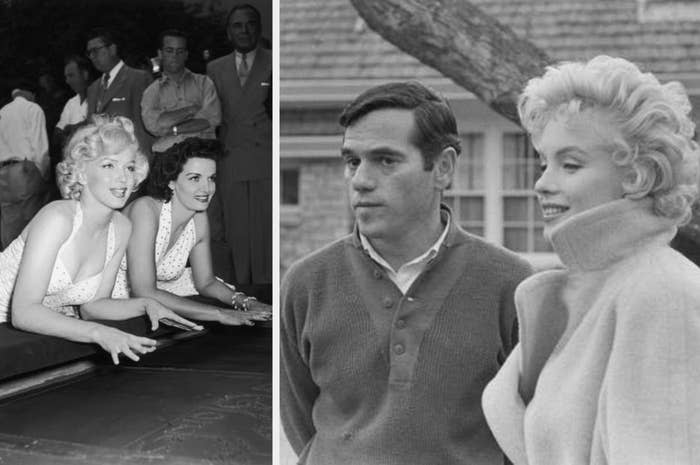
Here are 27 of the most thought-provoking moments from the film.

1.When Anthony Summers explained the extent of his research on Marilyn.

In 1982, the investigation of Marilyn's death was reopened in Los Angeles. Following this announcement, author Anthony Summers began researching Marilyn and the circumstances surrounding her death. He interviewed 1,000 people about the actor, which resulted in him gathering 650 tapes of audio recordings. He used these materials to write a book about Marilyn in 1985, called Goddess. Prior to this documentary, the interviews had never been released to the public.
"What I learned with information that changed completely what we thought we knew about her mysterious death, and it suggests that the circumstances of her dying was covered up," Anthony said.
2.When Anthony discussed the initial reluctance he was met with while investigating Marilyn's death.
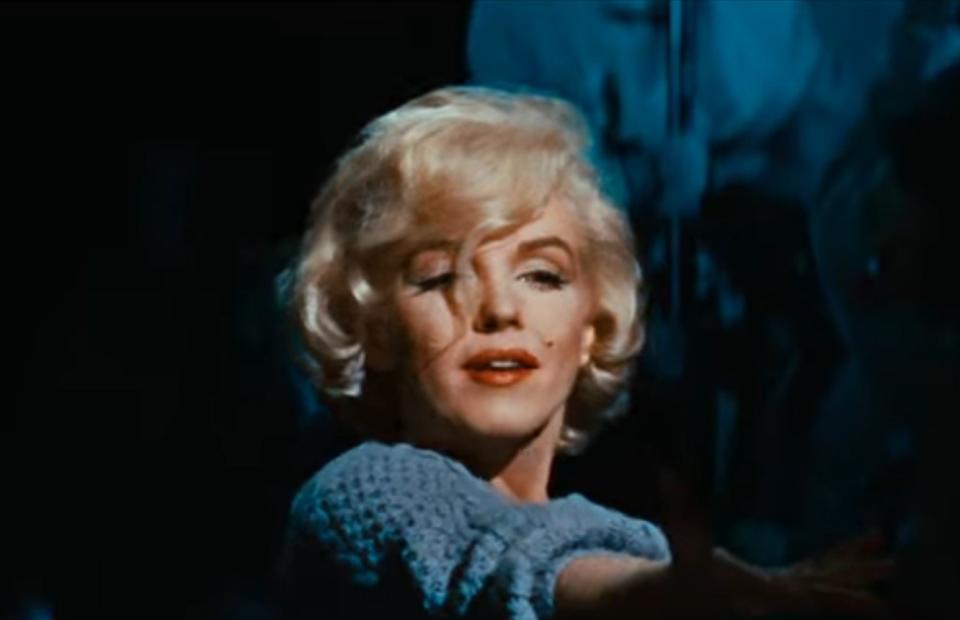
Anthony was eager to start analyzing Marilyn's death, but not many people who were familiar with Marilyn or the case were quick to speak with him early on. He described it as being "like banging on a brick wall" trying to find people willing to talk.
"I have often said that I could put together a scenario that would absolutely blow the minds of anybody who read it. But it would be terribly costly to government agencies, friends of mine, to people I know. I don't think I want to do that," a journalist said in a recorded conversation about Marilyn's death at the start of the film.
3.When Anthony spoke about how Marilyn used a misogynistic Hollywood structure to her benefit.
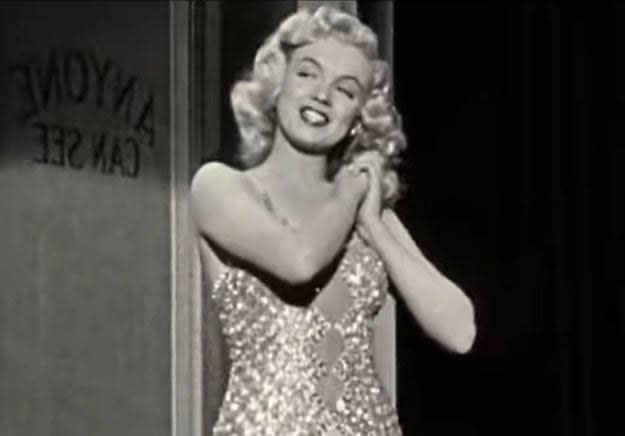
Former Hollywood agent, Al Rosen, explained to Anthony that casting directors of Hollywood's Golden Age used to keep black books. These were filled with the names of female actors who were willing to sleep with them in exchange for work. Although many new actors were exploited by men in the Hollywood system, Marilyn remained determined to prove her credibility through her talent.
"She wanted to be taken seriously," Anthony said. "She worked the system to her advantage."
Early in her career, Marilyn met Johnny Hyde, one of the most powerful agents in Hollywood at the time. Johnny was 30 years older than Marilyn, and the two became very close, with Anthony referring to him as her "sugar daddy." He was ill and had less than 18 months to live when he knew Marilyn, and Johnny spent much of his time focusing on her career.
"By night, he escorted her to the top people in town," Anthony said. "By day, he praised Marilyn's talents. Having Hyde's patronage could make her a star."
4.When director John Huston detailed how Marilyn created some of the most memorable performances in cinema.

John directed Marilyn in The Asphalt Jungle and The Misfits. During his recorded conversation with Anthony, he explained how Marilyn called upon her own private memories to deliver unforgettable and honest performances on screen.
"Marilyn went right down into her own personal experience for everything," John said. "She would reach down and pull something out of herself that was unique and extraordinary. She found things about womankind in herself. She had no technique. It was all the truth."
5.When Jane Russell described Marilyn's intense work ethic.

Jane and Marilyn starred together in Gentlemen Prefer Blondes in 1953. When she spoke to Anthony, Jane said Marilyn was "very bright" and had a desire to learn as much as possible about acting. After long days of shooting for the film, while her costars went home to rest, Marilyn would meet with an acting coach to further practice her performance skills.
"We were going home exhausted after a day's work. She'd go to the coach," Jane said. "But she wanted to be good."
The extra work Marilyn put in paid off, as Jane explained that her performance skills were evident to everyone on set.
"Then when the camera went on it was like a whole electric light went on ... They just came to life," Jane added.
6.When Marilyn's tendency to drift from one friend group to another was mentioned.

Although they became close while working together on Gentlemen Prefer Blondes, Jane and Marilyn's friendship eventually waned. Jane said it was a habit for Marilyn to become close to a band of people, but never for a sustained period of time.
"Marilyn kind of went from one group to another," Jane said. "She would take off, and it would be another group. That would become the shell for a time. She didn't go back and seek out any of the people that had become close to her."
7.When Marilyn's "it" factor always managed to show itself.

Dr. Ralph Greenson was a psychiatrist who often worked with celebrities and treated Marilyn towards the end of her life. Marilyn became close with Ralph, his wife, Hildi, and their kids, Joan and Danny.
"There was something about Marilyn that put her apart from everybody else," Joan said of Marilyn. When she would drive Marilyn around town, even while wearing casual attire, the Seven Year Itch star managed to gain the notice of admirers.
"Marilyn without makeup and a scarf over her head and just sitting there, you wouldn't think would attract any kind of attention," Joan said. "And yet, I would suddenly have five people washing my windows."
8.When Anthony read Marilyn's psychiatric evaluations.
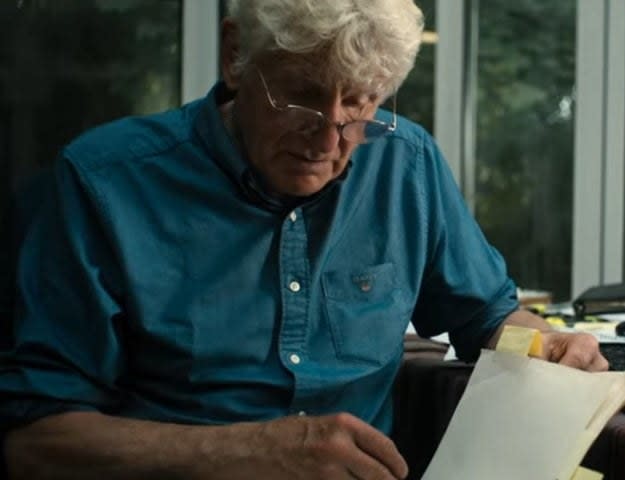
Ralph had passed away by the time of Anthony's investigation, but Hildi and Joan allowed him to read Ralph's written reports about Marilyn's psychiatric state. Ralph's writings on her condition were revisited by Anthony during the film.
"He thought that Marilyn had a tendency to paranoid reactions. However, she wasn't schizophrenic, and her paranoid-like reactions are more masochistic," Anthony said.
As a child, Marilyn spent some of her upbringing in an orphanage, went through more than ten foster homes, and was left with a guardian when her mother was placed in a mental institution. A crucial aspect of Ralph's write-up was his belief that Marilyn's troubled childhood played a huge part in her mental state as an adult.
"Greenson thought that the tendency towards acting out of the orphan girl rejections seemed, to him, central," Anthony said.
As a result, Ralph decided to introduce Marilyn to his wife and kids so she could experience the family environment that she craved.
9.When Marilyn opened up about her then-new relationship with Bobby Kennedy.
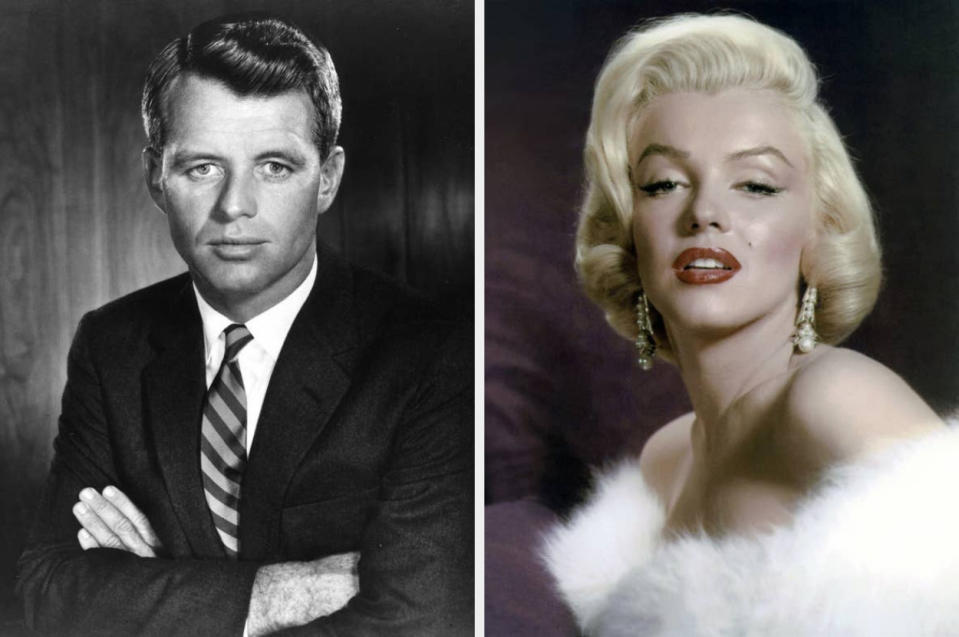
Marilyn confided in Joan that she'd begun to see a new romantic interest, but said he was someone who was too powerful to mention by name.
"She said that this person was so important that she wouldn't tell me who it was ... [she was] calling him 'the general,'" Joan said.
This is the title that members of the United States Department of Justice would use to refer to Robert F. Kennedy, who was the United States Attorney General at the time, Anthony explained.
10.When Danny recalled hearing about Marilyn's despondent thoughts.
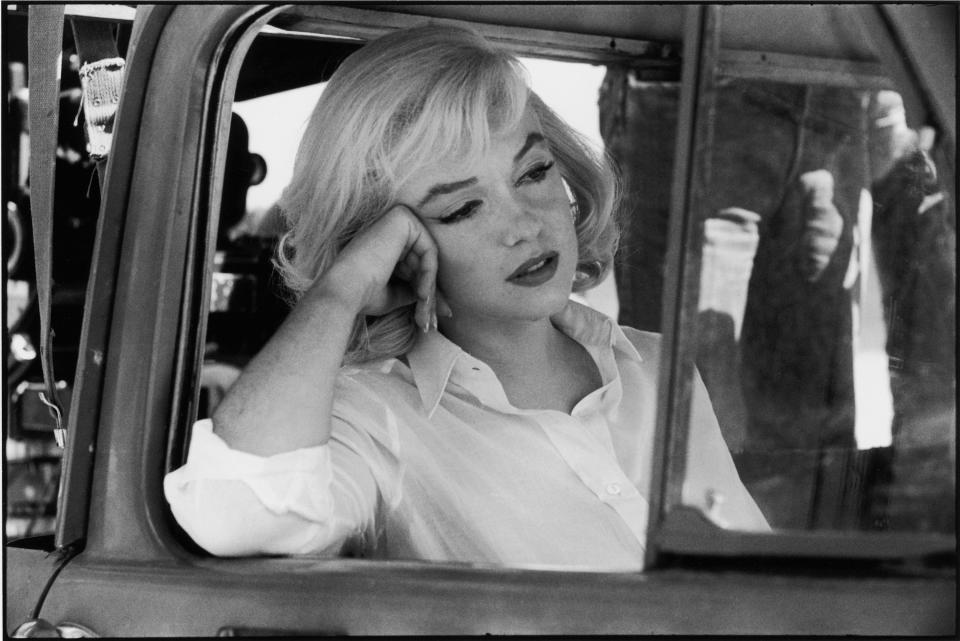
"My dad had told me that [Marilyn] got depressed at times about how terrible she felt about herself," Danny said to Anthony.
"And she talked about this whole litany of depressive thoughts: 'Nobody likes me. Everything I do turns to shit. I don't have anybody. I'm a waif,'" he added.
Similar to his father's conclusions, Danny credited Marilyn's childhood as being a key reason these feelings stayed with her as an adult.
"We all need to get out of childhood in one piece, but if nowhere along the line do you get that sort of reinforcement that you are worth love, you're lovable, that there's something in you, that we're a good person, what you end up with is a sort of emptiness," Danny said during in the documentary.
11.When Marilyn's optimism for her romance with playwright Arthur Miller was remembered.
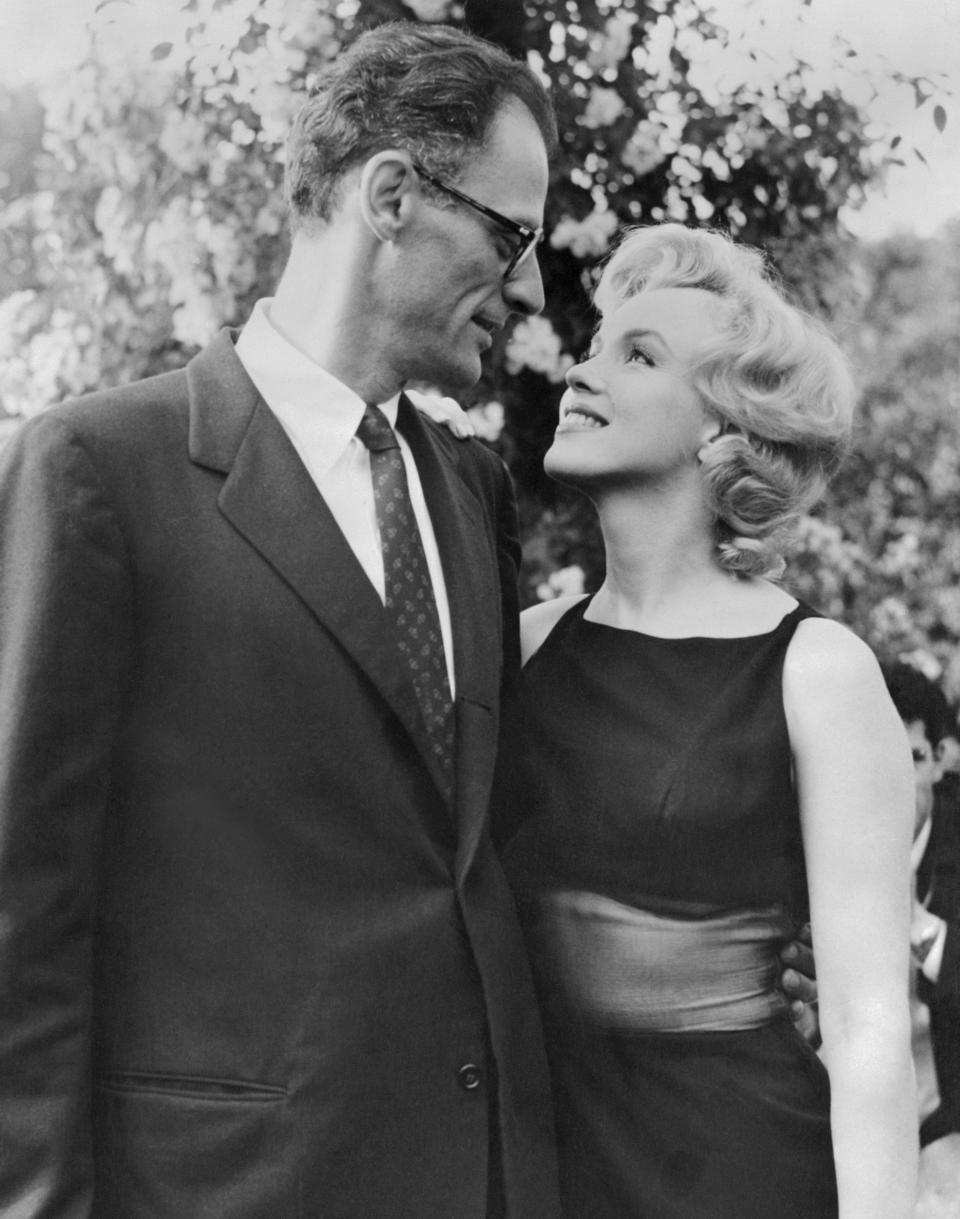
In 1956, Marilyn married Arthur, which was her third time tying the knot. She was previously married to James Dougherty as a teenager, then was later wed to Joe DiMaggio for nine months before they divorced. Those close to Marilyn noted that Arthur's intellect drew her to the Death of a Salesman writer.
"I think she was quite intrigued by people she thought to be bright," Gloria Romanoff, a restaurant owner who was friends with Marilyn, said of her union with Arthur.
On the back of one of the photos from her wedding day to Arthur, Marilyn wrote "hope, hope, hope," Anthony said.
The two would divorce in 1961. This would be Marilyn's final marriage before her untimely death.
12.When Marilyn made moves to be taken more seriously in her acting career.

"I would like to be a good actress ... a true actress. An artist with integrity," Marilyn said in archival audio recordings featured in the documentary.
As a result, she began studying at the Actors Studio in New York and started her own production company, Marilyn Monroe Productions. MMP went on to produce two films starring Marilyn, The Prince and the Showgirl and Bus Stop.
"She had very strong goals for herself," Peggy Feury, an actor and one of Marilyn's friends, said in a recorded call with Anthony. "She was so bright about acting ... She really cared."
13.When Marilyn's friends remembered her desire to have children.
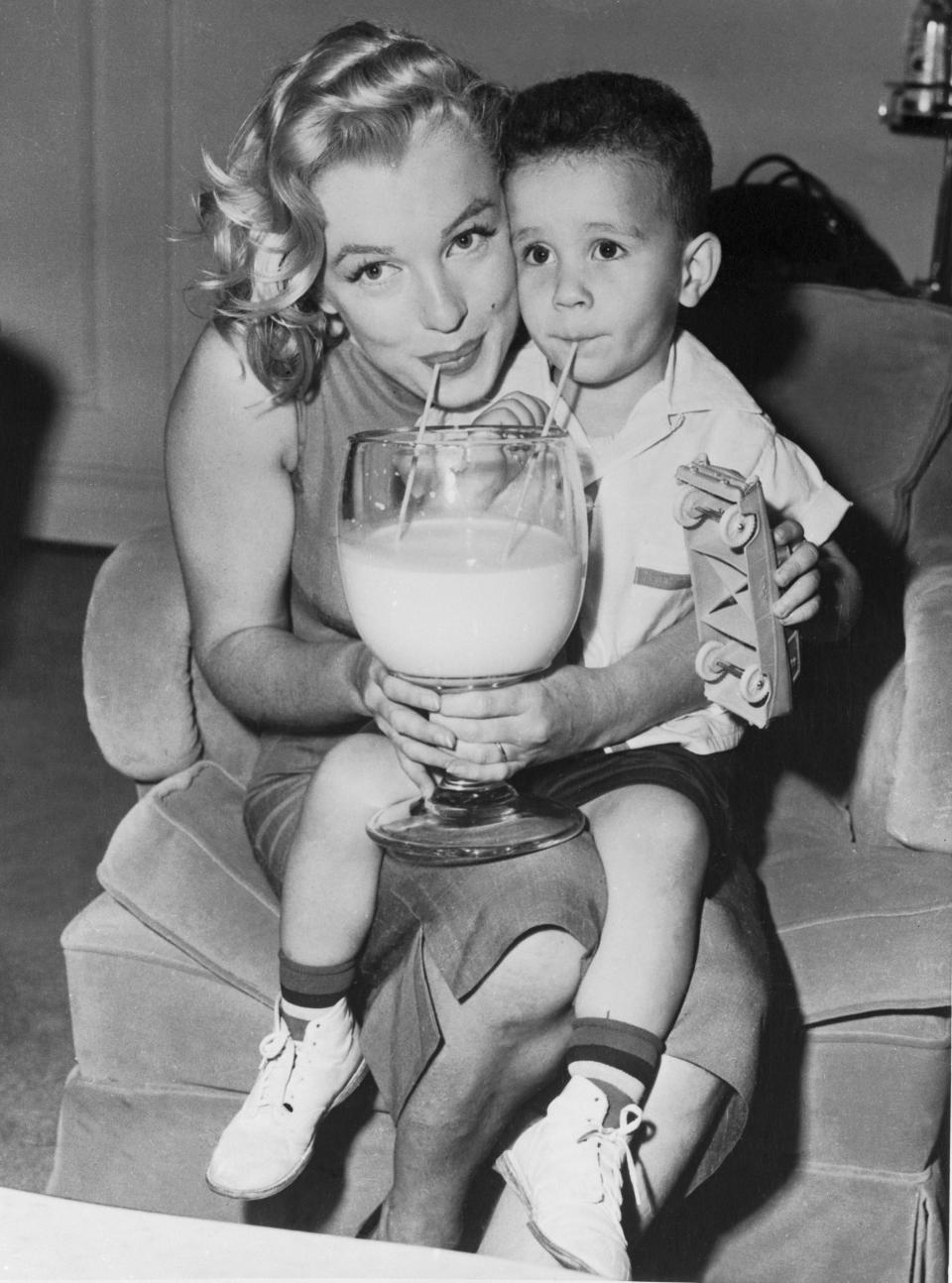
"If you gave her a choice between children and stardom, it would have been children. Without question," photographer Milton Greene said to Anthony.
Marilyn was once looking through photos with Danny Greenson and found a picture of herself with Arthur Miller's father. She told him the photo was taken during one of the most joyful times in her life, which caused Danny to inquire as to what the cause of her bliss was.
"[Marilyn] said to me, 'This is my happiest period.' And I asked her why," Danny said. "She showed me the picture and said, 'I was pregnant then.'"
Although she was pregnant three times during her life, Marilyn sadly never had the chance to raise children. Two of these pregnancies were miscarriages, and one was an ectopic pregnancy.
14.When John Huston noticed Marilyn's prescription drug problem while shooting The Misfits.

When John again directed Marilyn for The Misfits in 1960, he said the cast and crew were soon aware she was going through issues that resulted in constant tardiness on set. Leading up to her death, Marilyn had taken amphetamines, barbiturates, and sleeping pills for years, Anthony explained. John cited this as the source of her troubles.
"She'd be late on the set always," John said. "Sometimes the whole morning would go by. Sometimes she'd be alright. Occasionally, she'd be practically non compos mentis ... The narcotics were the problem."
"I remember saying to [Arthur] Miller one day, ... that if she went on at the rate she was going, why, she'd be in an institution in two or three years, or dead," he added.
15.When the origins of Marilyn's relationship with John F. Kennedy were revealed.

Although their affair later resumed in the early 1960s, Marilyn's relationship with John F. Kennedy, who was called Jack by friends and colleagues, began in the early to mid-'50s. A property developer who was one of Marilyn's friends, Arthur James, revealed this to Anthony. At the time, Jack was an East Coast senator and not recognized while spending time with Marilyn in California.
"Jack wasn't known here at all. He was a senator," Arthur said. "He was totally unknown here. No one ever expected Jack to become the president or the nominee. [He was] just some smart-ass rich kid's son that became senator."
Marilyn's relationship with Jack's brother, Bobby, started up after her affair with Jack had already begun.
16.When union leader, Jimmy Hoffa, approached private detective, Fred Otash, to wiretap the Kennedy brothers and Marilyn.

In an archival recording, Fred said he'd conducted investigations for and against the White House, police agencies, and the Mafia. This included being hired by Jimmy Hoffa, a corrupt leader who was in charge of the Teamsters Union and involved in the Mob.
At the time, Bobby Kennedy was targeting Jimmy's shady dealings, which created friction between the two of them. Jimmy then went to Fred to find incriminating information against the Kennedys.
"What Hoffa wanted was for me to develop a derogatory profile on Jack and Bobby Kennedy and their relationships with Marilyn Monroe," Fred said. "And the strategy agreed upon was to use electronic devices."
Fred set up wires at Marilyn's Brentwood home and the Malibu home of actor Peter Lawford, who was married to Bobby and Jack's sister, Patricia, at the time. Marilyn and the Kennedy brothers often visited Peter's home in the early '60s.
17.When director George Cukor forecasted Marilyn's enduring popularity.
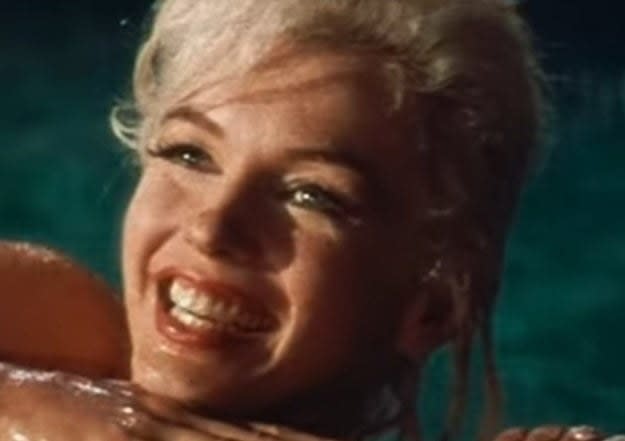
Robin Thorne served as a nurse to director George Cukor, who worked with Marilyn on Something's Got to Give. Although Marilyn was fired from the movie and the project was never completed, Robin relayed that George praised Marilyn's acting abilities and predicted her lasting fame.
"Marilyn will turn out to be the most popular actress of her generation, probably of this century," Robin said as she quoted George. "Her best films would have come late in her career. She had a great untapped dramatic talent."
18.When investigators recollected hearing private moments between Marilyn and the Kennedys.

John Danoff, a private investigator hired by Fred Otash, recalled listening to tapes recorded by the bugs that had been planted at Peter's home. The wires captured conversations about Marilyn's affairs with Jack and Bobby, and they also recorded some of their most intimate moments.
"[There were] arrangements for meetings. There were going to be rendezvous with Jack Kennedy, Bobby Kennedy, and Monroe," John said. "So there were numerous tapes made on Marilyn and Jack at the beach house in the act of lovemaking."
Fred said there were more recordings that documented Marilyn and Bobby's time together than there were recordings between her and Jack. This was due to the fact that Bobby often visited Marilyn's home, where additional bugs were placed.
19.When the FBI investigated Marilyn during the Cold War climate.

At one point in the film, Anthony was shown going through a copy of an FBI profile on Marilyn. The law enforcement agency's observations of the actor had begun years prior to her death, and they thoroughly followed her during her relationship with Arthur Miller. The playwright was thought to be affiliated with the Communist Party, which raised eyebrows during the Red Scare of the Cold War.
Anthony read some highlights from the FBI file, which he said was labeled as "SM-C," meaning security matters – communist. It also included a March 1962 document that showed Marilyn had visited friends in Mexico who were communists and had been kicked out of the United States. She told one of the friends, Fred Vanderbilt Field, that she'd previously engaged in political discussions with Bobby Kennedy.
"She'd mingled with Communist American ex-pats, and FBI agents had been watching," Anthony said. "To the intelligence agencies, the Kennedys' celebrity plaything, a volatile creature running to her psychiatrist every day, chattering on the telephone to all and sundry, was absolutely the wrong woman to be on intimate terms with the president and attorney general."
20.When Anthony traced the Kennedys' concerns over delicate information they'd discussed with Marilyn.

Another FBI document included a quote from an unidentified person who knew Marilyn. They said that Marilyn told them she'd just "discussed the morality of atomic testing" with Bobby days prior to their meeting. This subject matter was highly sensitive at the time, and Anthony reasoned it was likely what resulted in the Kennedys distancing themselves from Marilyn.
"Nuclear matters were the dominating international issue," Anthony said. "Because [Marilyn] was in touch with people who were regarded as communist, all of whom were talking to Fidel Castro's people, the political risk was extreme. This is very possibly the thing to which the Kennedys said, 'Shit. She can make public that we've been discussing nuclear matters at this critical time. We've got to stop all this. We can't deal with Marilyn Monroe anymore.'"
Arthur James said Marilyn told him she felt "hurt" when she was ordered by Bobby to "never to call or contact" him or Jack again. This conversation with Marilyn took place one month before her death.
"That's what killed her .. It was the beginning of the last day," Arthur said.
21.When Anthony found conflicting details about the reported timeline of Marilyn's death.

After Marilyn died, her housekeeper, Eunice Murray, said the actor had retired to her bedroom at 8 p.m. At 3 a.m., Eunice woke up and noticed that Marilyn's bedroom door was locked and the lights were on. This caused her to become worried, so she called Dr. Ralph Greenson, who broke in through Marilyn's bedroom window and found her already dead. The authorities were contacted at 4:25 a.m., according to police records.
Anthony questioned the accuracy of this timeline, however, after speaking to Natalie Jacobs, the wife of Arthur Jacobs, Marilyn's agent. Natalie said she and Arthur left a Hollywood Bowl concert they were attending the night of Marilyn's death when Arthur received an urgent call at around 10:30 p.m. Natalie then went home, while Arthur went to Marilyn's house, she said. This timeline was later corroborated by Juliet Roswell, a colleague of Arthur's, during a separate talk with Anthony.
"[The reported timeline is] not true because my husband was [at Marilyn's house]," Natalie said. "My husband fudged everything off. And that I cannot tell you why because he's no longer with us."
"Don't forget, that was his business – to keep the press at bay. He kept everyone in abeyance," she added.
22.When Anthony heard admissions that Marilyn had been picked up by an ambulance on the night of her death and didn't pass away at her home.

Anthony discovered that ambulance attendant, Ken Hunter, said he went to Marilyn's house the night she died during a recorded Los Angeles County District Attorney's Office interview. Anthony reached out to Walt Schaefer of Schaefer Ambulance Service for more information.
"[An ambulance] took her to Santa Monica Emergency," Walt said to Anthony about the night of Marilyn's passing. He also said that Marilyn hadn't died at home.
"She was picked up and taken comatose to the hospital, and that was the end of the story so far as Schaefer's were concerned?" Anthony asked Walt.
"It's the truth," Walt said in response. Anthony stated he "found no less than seven" Schaefer Ambulance workers who confirmed this claim.
23.When Dr. Ralph Greenson's knowledge of how Marilyn's death played out was questioned.

Writer and journalist, John Sherlock, explained that a couple years after her passing, Dr. Ralph Greenson disclosed information about Marilyn's death to him. According to John, Ralph said Marilyn was transported to St. John's hospital in Santa Monica, died in the ambulance, and was then moved back to her home. He also said Ralph claimed he was present in the ambulance.
Ralph's son, Danny, was hesitant to address this claim when Anthony asked him about it during their talk.
"I just don't feel comfortable telling you what [Ralph] told me," Danny said.
"This sort of thing was not talked about," Hildi, Ralph's wife, said. "Also, [Ralph] wouldn't want to burden me with a knowledge that I would then have to hide."
24.When Anthony discovered Bobby Kennedy had been in town at the time of Marilyn's death, and a fight occurred between the two.
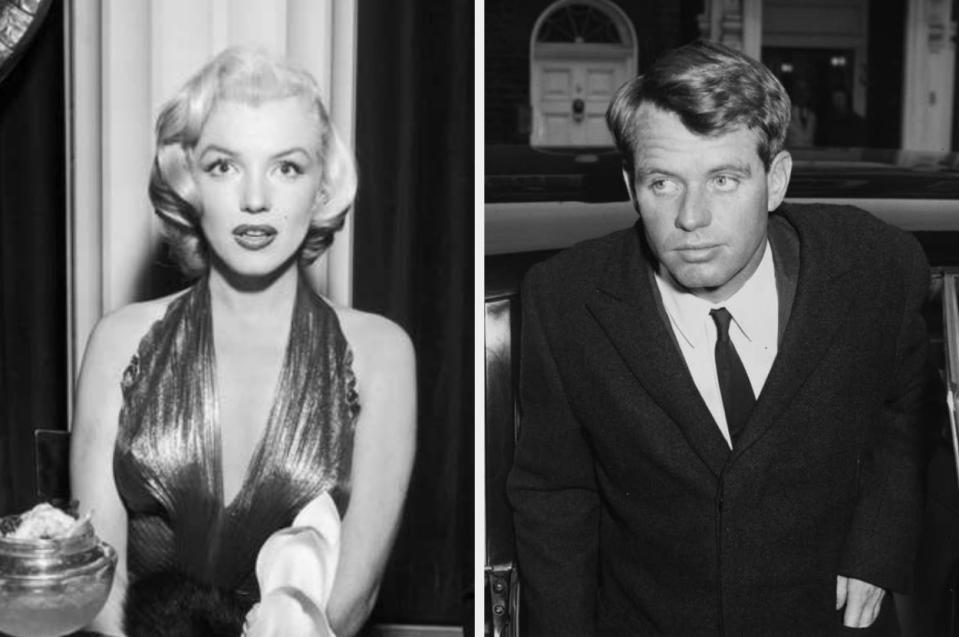
Harry Hall, a law enforcement informant, alleged that a federal agent told him Bobby Kennedy had flown into Los Angeles the night of Marilyn's death, then left town after her passing. Natalie Jacobs disclosed to Anthony that Bobby was at Peter Lawford's beach house that weekend.
A recording that had been reviewed by Fred Otash taped a "very violent argument" between Marilyn and Bobby on the night she died.
"Bobby Kennedy called [Marilyn] the night of her death from Lawford's house," Fred said. "And she said, 'Don't bother me. Leave me alone. Stay out of my life ... I feel passed around, I feel used, I feel like a piece of meat.'"
"She was raising a stink, calling John [F. Kennedy] and the White House and complaining about the situation," Reed Wilson, a surveillance expert who worked for Fred, said. "I understood it to mean that she was calling to say, 'Get your brother away from me. I hate all of you.' That type of thing."
25.When Anthony explored the idea that the specifics of Marilyn's death were kept quiet due to her affiliation with the Kennedys.

Eunice Murray said that Bobby had been at Marilyn's home the afternoon before she passed away. She also suggested that his backers had to get involved when the conflict between him and Marilyn escalated.
"It became so sticky that the protectors of Robert Kennedy had to step in there and protect him," Eunice said.
The details of Marilyn's sudden passing were kept "hush-hush," Harry claimed, due to the potentially damaging impact connecting Bobby to the situation could have for him and his brother.
"The man that really was involved was the boss. He was the attorney general of the United States, so he could have the FBI do anything," Harry said.
A journalist who reported on the case, Bill Woodfield, did some independent investigating when press releases didn't seem to be adding up to him. He tracked down a helicopter pilot, examined his log, and found that he'd flown Bobby to San Francisco around 2 a.m. or 3 a.m. the night Marilyn's death was reported.
"A call was made to Bobby Kennedy's people," Bill said. "The message we got back was that Kennedy would appreciate it if we didn't do the story. We decided that we would not go with the story."
26.When Peter Lawford requested all information documenting the Kennedys' connection to Marilyn be destroyed.

Shortly after Marilyn died, Peter ironically went to Reed Wilson and Fred Otash to remove any information in Marilyn's home that could jeopardize the Kennedys' reputation.
"Lawford showed up completely disorientated and in a state of shock, saying that Marilyn Monroe was dead, that Bobby Kennedy was there, that they had gotten in a big fight, that [Bobby] was spirited out of town back up north," Fred said. "And that he'd like to have me make arrangements to have someone go out to [Marilyn's] house and pick up any and all information that was possible regarding any involvement between Marilyn Monroe and the Kennedys."
There's only one picture of Marilyn and the Kennedy brothers in existence, as "other photos would be seized from at least one picture agency shortly after Marilyn's death by men claiming to be FBI," Anthony said. He also stated that the wiretap recordings of Marilyn, Bobby, and Jack "may have been seized by law enforcement."
27.When Anthony stated his conclusions about what happened to Marilyn.
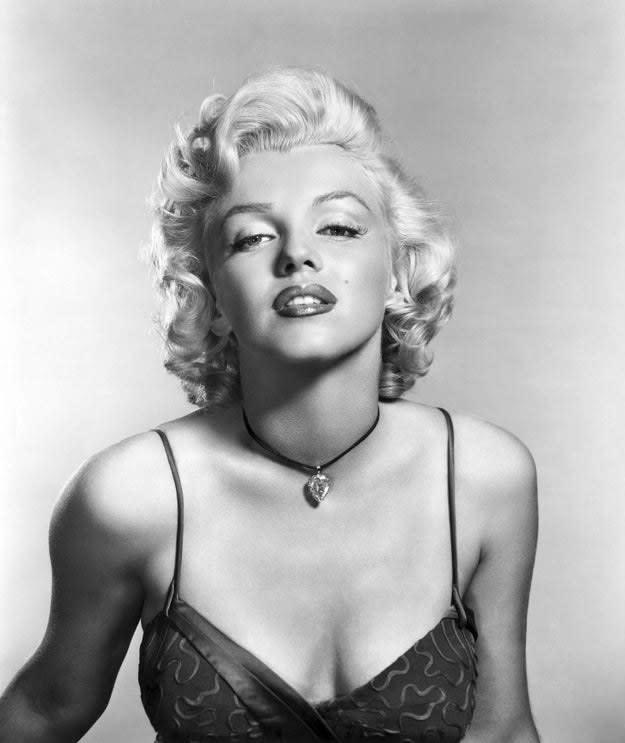
"Although I made a lot of progress in the work, and indeed found out things to do with her dying and the circumstances of her dying which had not been found out before, I did not find out anything that convinced me that she had been deliberately killed," Anthony said at the close of the film.
Anthony believes Marilyn either committed suicide or died of an accidental prescription drug overdose. However, his findings did imply that "her death had been deliberately covered up."
"If you then say to me, 'Why were those circumstances covered up?' I would say that what the evidence suggests is that it was covered up because of her connection with the Kennedy brothers," Anthony said.
Peter Lawford later agreed to talk to Anthony about the case. The actor became emotional as he expressed his regret for not going to Marilyn's home the night she passed away.
"I checked the operator for out of order. The operator said, 'The phone's off the hook,'" Peter said. "She was dead. I've had to live with it. I should have got in my car and gone up there. I should have known better."
After Marilyn's death was reexamined in 1982, the findings of the case remained the same as they originally were in 1962.